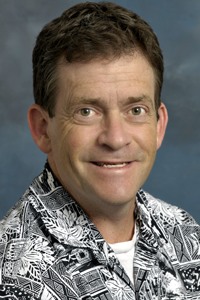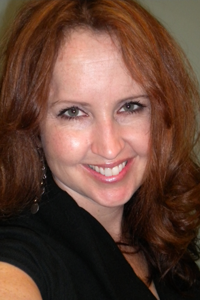For vets returning with PTSD, a new study tests possible treatment option
June 23, 2010

Shawn Youngstedt

Shannon Cornelius
Bright light therapy shows promising results in relieving post-traumatic stress disorder (PTSD) among combat troops returning from Iraq and Afghanistan, according to a study by Arnold School of Public Health and Veterans Administration researchers.
The ongoing study, financed by the VA, has involved troops who are processed through the Dorn VA Medical Center in Columbia, said University of South Carolina Arnold School researcher Dr. Shawn Youngstedt, the study’s lead investigator.
Although it is too early to say whether the bright light therapy will become a standard treatment protocol for combat PTSD, it has helped veterans sleep better while relieving stress, anxiety and depression, he said.
Preliminary findings from the study were presented recently by Shannon Cornelius, a graduate research assistant on Youngstedt's staff, at the annual meeting of the Association of Professional Sleep Societies LLC in San Antonio, Texas.
PTSD, considered the most common mental health disorder among combat veterans, affects an estimated 300,000 persons, according to a study by the Rand Corporation.
Many service members do not seek treatment for psychological illnesses because they fear it will harm their careers. But even among those who do seek help for PTSD or major depression, only about half receive treatment that researchers consider "minimally adequate" for their illnesses," according to the Rand study.
Treating PTSD is a tough job, said Youngstedt, an associate professor in the Department of Exercise Science at the University of South Carolina’s Arnold School and the Dorn VA.
"Drugs are not that effective. Mental health counseling works, but the VA doesn't have enough counselors to handle the need," he said.
Youngstedt said study participants were given psychological and physical examinations before beginning the study. Half of the subjects self-administered bright light therapy for 30 minutes a day, while the other half used a negative ion generator for the same duration. Each of the treatment sessions lasted two weeks.
Cornelius told the Sleep Research Society that examinations of the two groups before and after the treatment showed "significant effects of bright light on disruptive nocturnal behaviors associated with combat PTSD, as well as positive effects of bright light therapy on PTSD symptom severity."
The American Academy of Sleep Medicine reports that 70 to 90 percent of people with PTSD describe subjective sleep disturbance. Recurrent nightmares of the traumatic event represent one of the most problematic and enduring symptoms of PTSD. These nightmares may take the form of a realistic reliving of the traumatic event or depict only some of its elements.
Bright light therapy exposes a person’s eyes to intense but safe amounts of light for a specific and regular length of time. Typically it involves exposure to up to 10,000 lux of light for scheduled periods of 20 minutes or more using a small light box.



_01.jpg)
_02.jpg)